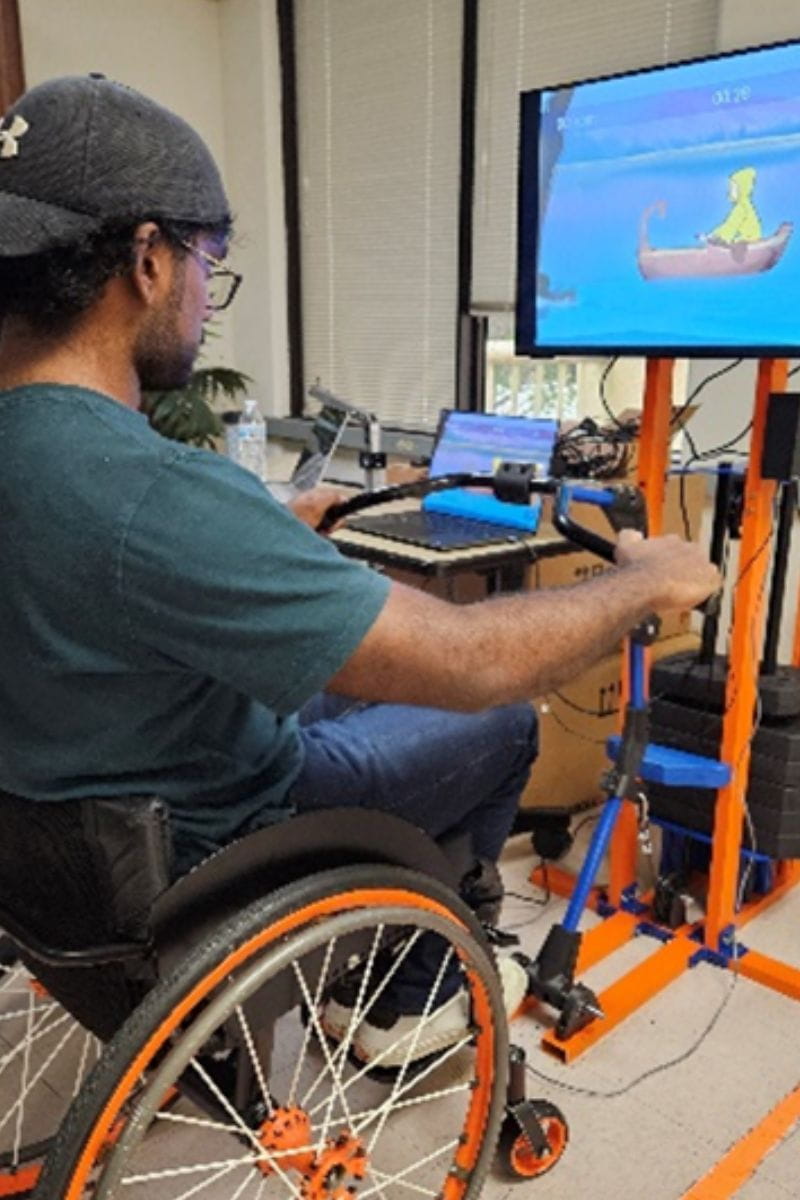
An estimated 16% of people worldwide live with a significant disability that impacts their daily life. Of this population, only about 40% engage in aerobic activity. Due to this lack of exercise, people with disabilities (PWD) are more likely to suffer from chronic conditions such as heart disease, stroke, diabetes, or cancer and are at higher risk of mental illnesses like depression and anxiety.
"Many PWD struggle with psychological issues such as low self-esteem and negative body image, which can further reduce their motivation to participate in exercise activities, especially in public places like gyms," said Alexandra Jamieson, research scientist at The University of Texas at Arlington Research Institute (UTARI) and lead author of a new peer-reviewed study on adaptive exercise technologies for PWD. Former UTARI student researcher Helara D. Wijesundara is also an author on the paper.
Even PWD who are interested in exercising face challenges, as most commercial gyms lack adaptive equipment and properly trained staff to ensure their safety. Jamieson found that although some nonprofit organizations aim to promote fitness for PWD, there are few commercial efforts to reach the wider community to encourage exercise.
"The biggest barriers to fitness are accessibility and cost," said Jamieson. "Standard gyms are not legally required to have adaptive machines for users of differing abilities. Plus, there is generally a lack of data about the demand for these adaptive machines that would help gyms justify the higher costs of adding them."

She also noted that transportation to and from the gym can be an issue for PWD. Although ride-sharing and disabled transit options exist, they are not always reliable, and many are not equipped for PWD.
Home gyms are a popular option for PWD, but a lot of adaptative exercise equipment is produced by smaller manufacturers and has higher production costs, making it cost-prohibitive for individuals to purchase it. Jamieson suggests expanding government assistance programs around acquiring adaptative exercise machines for home use.
"Medicaid does have purchasing assistance programs for PWD to buy assistive technology, but they are not well known and only cover exercise machines that are deemed medically necessary by an individual's doctor," she said. Raising public awareness among physicians and PWD about how to apply for assistance to acquire adaptive exercise equipment could be a way to help.
To improve adaptive exercise options, Jamieson is working with colleagues from UTARI, the Department of Kinesiology, and the Department of Art to create an adaptive exergame machine, a type of accessible exercise equipment with a video game component that keeps users engaged while monitoring their activity. The team is currently recruiting individuals to participate in a pilot study of the technology. Please contact Jamieson if you would like additional information.






